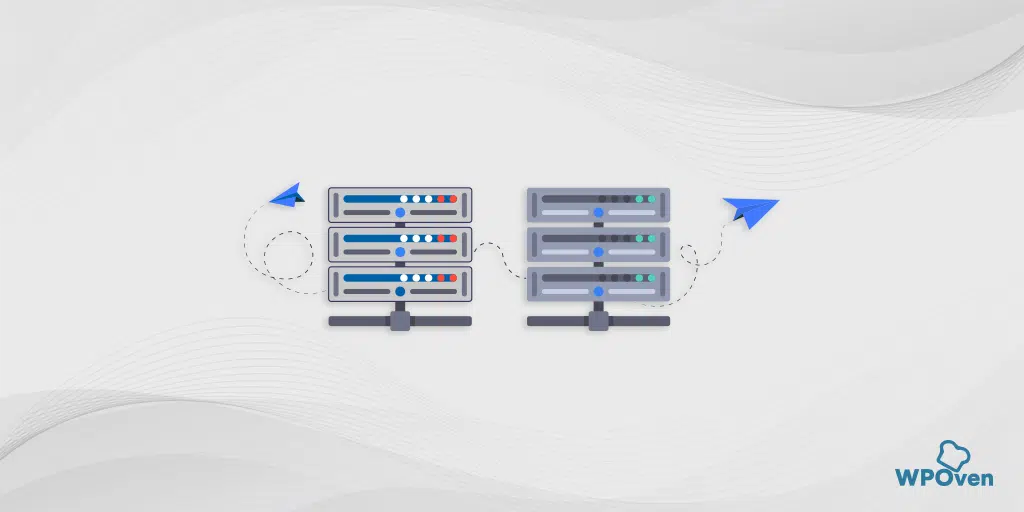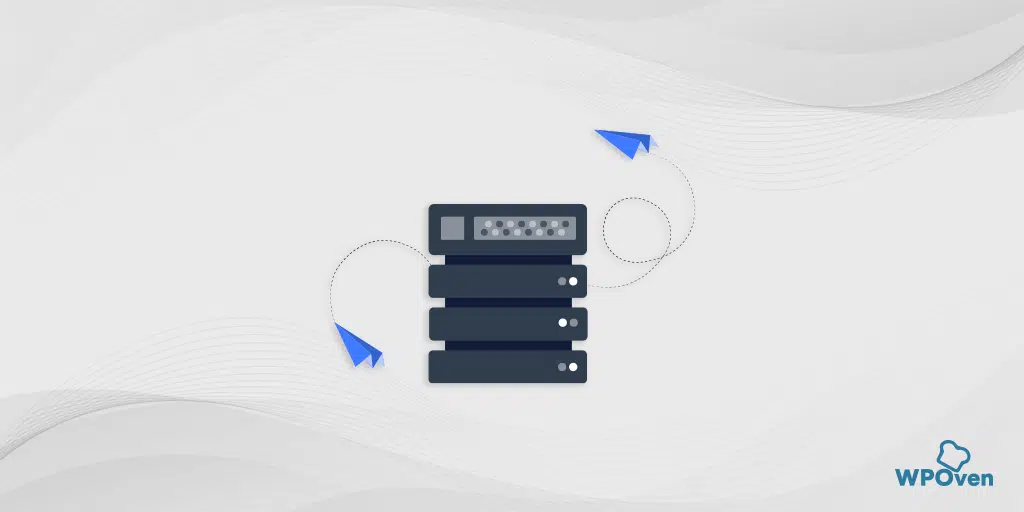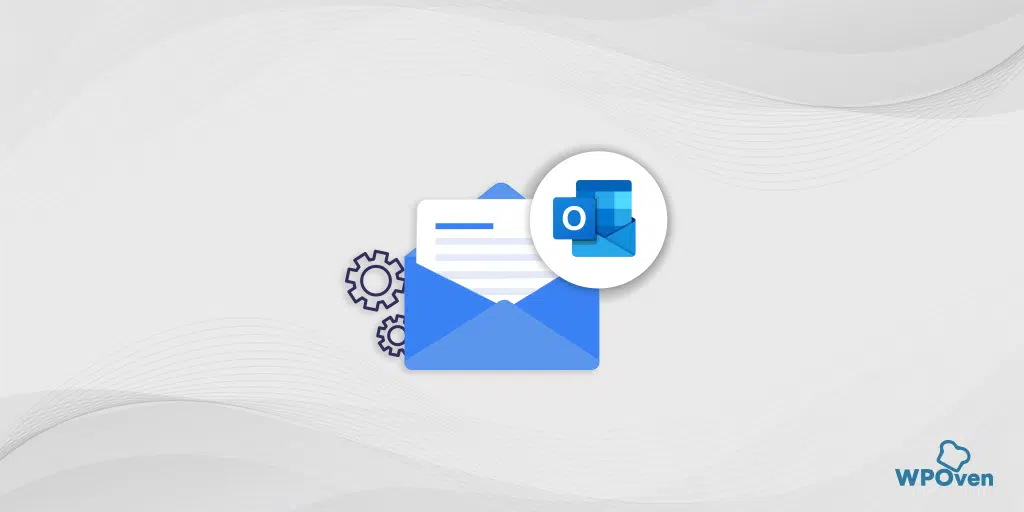Emailing is not as easy as it seems. On the first hand, it might look simple and easy to just write an email and send it. But when you start to explore much deeper into it, things will start to become more complex and sophisticated.
When you start exploring the world of email, you will start noticing some technical acronyms such as SMTP, SMTP relay, IMAP, POP, etc., or terms related to emails such as Transactional emails, email-deliverability, and SMTP servers, which might sound completely alien to you.
At the very beginning, creating an email list and setting up your first newsletter is great but if you are moving further to understand the whole concept of email marketing, then you must go through SMTP relays to understand it first.
But you do not need to worry about it, we have already covered most of the topics related to email in beginner-friendly language. Similarly, in this post, you will also get to know everything about one of the most interesting terms in emails, “SMTP relays”.
Let us get started!
What is an SMTP Server?
Before directly defining what an SMTP relay is, First You must understand What is an SMTP server?
The acronym SMTP stands for Simple Mail Transfer Protocol, which means it is a set of rules or instructions that is used for sending emails via the Internet on the web. Where Email protocols are termed as a set of instructions that help to execute the email transmissions between email clients and accounts efficiently.
This email protocol is generally used to manage and send emails through an SMTP server.
Similarly, a Gmail SMTP server is like any other free SMTP server that can be used by anyone around the world. With the help of the Gmail SMTP server, you can easily perform all your email transactions from your Gmail account using any email service or web application.
Read: 🚩 6 Best Bulk Email Services for Email Marketing [Free & Paid]
What is an SMTP Relay?
SMTP relay is a protocol that is responsible for relaying or transmission of all outgoing emails such as transactional emails or marketing emails from one server to be delivered to another. Most of the email services you see today use an SMTP relay service for sending emails.
Since SMTP is a protocol or set of rules for sending emails, you can think of SMTP relay as the process of email transmission between one server to another.
What is Mail Relay?
Since SMTP relay is a protocol for relaying messages or emails from one server to another, mail relay is the process of email transmission from one server to another.
To better understand this, let us consider an example. Suppose you work in the company “A” and want to send an email to a person from company “B“.
When a person from company A sends his outgoing message to another person from company B, his company’s SMPT server will connect to company B’s receiving server and relay the email message to the server owned by company B. But in case, if a person has to send an email to another person within the same company or domain, there would be no email relaying taking place.
It is because your SMTP relay server would not need to transfer the email to a different SMTP server for the mail to be delivered.
What is the SMTP Relay Service?
At the beginning of this post, we have comprehensively explained some terms related to SMTP such as What is its definition, SMTP relay, and mail relay.
But what if businesses or big organizations need help to execute the process of relaying email? In this particular scenario, an SMTP relay service comes into the picture.
An SMTP relay service or SMTP provider is a type of mail relaying service in which the provider helps a sender deliver bulk transactional emails through a secured and trusted route with the help of 3rd party. During the relaying process, the SMTP relay service provides all the technical expert support as well as technology resources to help businesses deliver bulk transactional emails over SMTP.
Why is SMTP Relay so Important?
SMTP relay is very important, without it users won’t be able to send emails to anyone outside their domain. It will become absurd to use emails for sending messages and doing online communication.
Although sending an email from one person to another is a pretty straightforward process. But when it comes to managing your email for your business, things become pretty much more complicated, especially in situations when you have a web application that has to send critical emails to your clients with a high deliverability rate or send bulk transactional or marketing emails to the mass.
If you try to send your marketing or transactional emails in bulk through any mail server such as Gmail, Yahoo, or Microsoft Exchange. There are higher chances you will face email deliverability issues and even your ISP’s daily maximum limit will be exhausted.
In addition to that, with email relay services, businesses or organizations can easily send bulk marketing or transactional emails without any fear of getting domain block listed. It works in such a way that an SMTP relay service rents a third-party domain and server through which bulk emails are being sent in place of the actual business.
It is because, if a business domain or its email server is being used to send bulk emails and it gets blacklisted due to any reason or the emails are being dropped by a recipient’s email server no matter how legitimate the message was.
This situation can be a very devastating situation for any business because not only does it hamper productivity but also maligns its reputation and all the sent emails either will never be delivered or end up being landed in the recipient’s spam folder.
Therefore, SMTP relay services provide businesses with an alternate path to send bulk transactional or marketing emails without using their domain as well as servers. It is the best way to send and manage emails into batches as well as automate them.
In addition to that, sending email messages over SMTP through a trusted and reputed 3rd party will ensure higher deliverability and provide a seamless experience.
Note: You can even set up a multifunction device or application to send email using SMTP relay for Microsoft Office 365.
Read: 🚩 6 Best Bulk Email Services for Email Marketing [Free & Paid]
When Should You Consider Using an SMTP Relay Service?
There are higher chances that at some point in your life, you have sent an email message over an SMTP server.
As we have already discussed in the above sections, organizations or businesses use SMTP relay services to send bulk transactional or marketing emails. Even your online store or any web application most probably uses SMTP to send you transactional or marketing emails such as promotions, password reset, online receipts, or reminder emails.
There are some very common scenarios in which you should consider using an SMTP relay service:
- You have recently built an online eCommerce store where you can implement an email delivery system through which you can easily send transactional as well as promotional emails to your clients.
- You are looking for a very simple and alternative option to send bulk emails without any limitations or issues and ensure high deliverability.
- You are looking to send an email through IoT (Internet of Things) devices such as scanners, printers, etc.
- If you are fed up with limitations or restrictions imposed by your current ISP on several SMTP relays per day. Whereas an SMTP relay provider alternatively lets you send bulk emails without being blacklisted with a higher deliverability rate.
How Does an SMTP Relay Work?
Sending an email or transmission of emails works similarly just like any typical physical mailing system works. You can think of it in a way that the post office sends mail from one location to another, similarly, email transmission took place on the Internet.
In a typical physical mail delivery system, the sender puts a letter or an envelope in a mailbox, and after a while, postal workers pick it up and send it to the central hub. From that central hub or center, the mail or envelope starts its journey through any of the transport (By air, land, or ship) to the recipient’s nearby central mail office or hub.
A postal worker picks up the mail from that particular recipient’s nearby central mail office and delivers it to the recipient’s mailing address.
Similarly, an SMTP service works in the same way. You can say it is an analogy to our physical mailing system. When a sender sends an email it is transmitted to an SMTP server where it is kept in a virtual envelope. At this moment, the SMTP server also identifies that the recipient’s domain does not match the sender’s domain.
So, here the relay service gets activated and sends the mail to the recipient’s mail server which manages the incoming emails. All the incoming messages will be kept there in the recipient’s mail server unless or until it the user has not retrieved them.
Just like SMTP is used for sending emails, there are different protocols used for incoming emails as well. Which are popularly known as POP (Post office Protocol) and IMAP (Internet Message Access protocol).
The main difference between these two incoming email protocols is that POP is used when a user retrieves all the messages and after that, the messages will be permanently deleted from the server. But in IMAP, the messages will remain on the server even after messages have been retrieved. It will be available on the server unless the user deletes it.
This IMAP protocol is most commonly used by some popular email services such as Google’s Gmail.
SMTP servers have to perform a few more additional steps rather than just sending the message. First, it creates a virtual envelope and adds some headers to the message which contain some additional information about the message.
In addition to that, to make the whole email message transmission secure, authentication is generally used. It is because SMTP servers are available in the public domain and run openly on the internet, due to which SMTP relays are attacked by spammers who can take advantage of sending spam messages.
Therefore, to stop spammers, reputed ISPs and even Gmail also uses authentication on public relays to tackle spammers.
Read: 🚩 SMTP Server Setup, Usage, and Best Practices
How to Choose SMTP Relay Ports?
SMTP ports are another way to communicate between two mail servers in which a typical IP address helps to identify the right computer and the port helps to identify the correct application or service running on the same computer.
To better understand this term, let us relate it to our human world. Suppose an IP address is the real physical address of a shopping complex. Where port will be related to the number of shops in that particular shopping complex.
If you want to send or deliver anything to a particular shop in the same shopping complex, you cannot just mention the shopping complex but you also have to mention the shop not, so that it can reach the right shop.
The whole email transmission process requires a few steps to complete and requires different SMTP ports to establish SMTP connections.
During each step in the whole process, multiple different ports come into the picture,
- For Email Submissions (Uses port 587 or 2525)
- SMTP Relay (uses port 25)
- Email Receiving (IMAP uses port: 143 or 993 and POP uses port: 110 or 995)
Hence, choosing the correct SMTP relay port is essential when it comes to SMTP. It is so important that we have a dedicated detailed post for those already. If you are confused about which SMTP relay port to use and could not able to decide, then you must check out our detailed article on “SMTP Port 25, 465, 587, 2525: Which Port Should I Use?” and choose the right SMTP relay port.
Wrapping Up
Ultimately, we can say, the SMTP relay is a boon for all marketers and businesses in making things a lot easier and bringing a smoother experience. Now, marketers can focus on their developing content and business growth rather than worrying about all the heavy lifting tasks in the backend.
If you would like to learn more about SMTPs and terms related to them, you can go through our blog section and check out our other blogs related to them. Apart from it, if you have any questions regarding this post, please do let us know in the comment section below.
Frequently Asked Questions
What is an SMTP relay?
SMTP relay is a protocol that is responsible for relaying or transmission of all outgoing emails such as transactional emails or marketing emails from one server to be delivered to another. Most of the email services you see today use an SMTP relay service for sending emails.
Since SMTP is a protocol or set of rules for sending emails, you can think of SMTP relay as the process of email transmission between one server to another.
What is the difference between SMTP and SMTP relay?
The acronym SMTP stands for Simple Mail Transfer Protocol, which means it is a set of rules or instructions that is used for sending emails via the Internet on the web.
This email protocol is generally used to manage and send emails through an SMTP server. But SMTP relay is a protocol that is responsible for relaying or transmission of all outgoing emails such as transactional emails or marketing emails from one server to be delivered to another. Most of the email services you see today use an SMTP relay service for sending emails.
Is SMTP relay safe?
Although SMTP servers are protected with usernames and passwords, these servers are available in the public domain and run openly on the internet. Which attracts spammers who can take advantage of sending spam messages. Therefore, to stop spammers, reputed ISPs and even Gmail also uses authentication on public relays to tackle spammers.

Rahul Kumar is a web enthusiast, and content strategist specializing in WordPress & web hosting. With years of experience and a commitment to staying up-to-date with industry trends, he creates effective online strategies that drive traffic, boosts engagement, and increase conversions. Rahul’s attention to detail and ability to craft compelling content makes him a valuable asset to any brand looking to improve its online presence.





![How to Fix "SMTP Error: Could not Authenticate"? [6 Methods] SMTP error Could not authenticate](https://www.wpoven.com/blog/wp-content/uploads/2023/05/SMTP-error-Could-not-authenticate.png.webp)

![How To Resolve WordPress Not Sending Emails Issue? [2023] wordpress not sending emails](https://www.wpoven.com/blog/wp-content/uploads/2022/04/How-To-Resolve-WordPress-Not-Sending-Emails-Issue.png)
